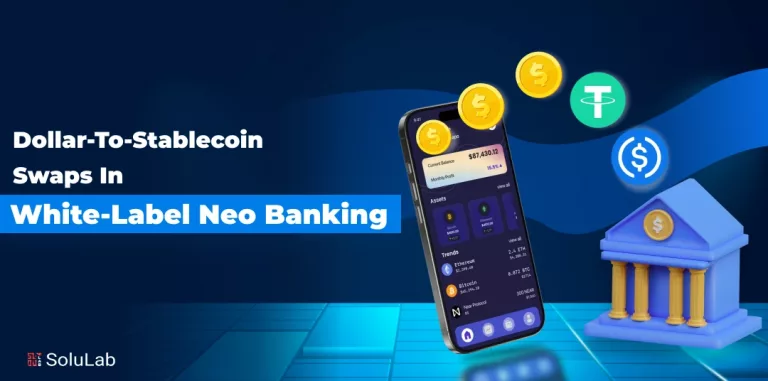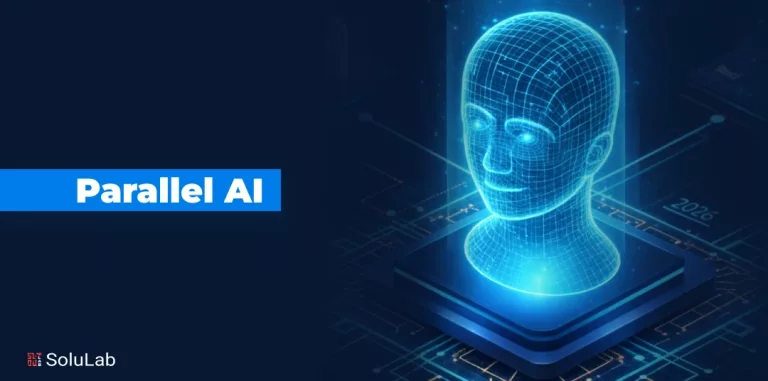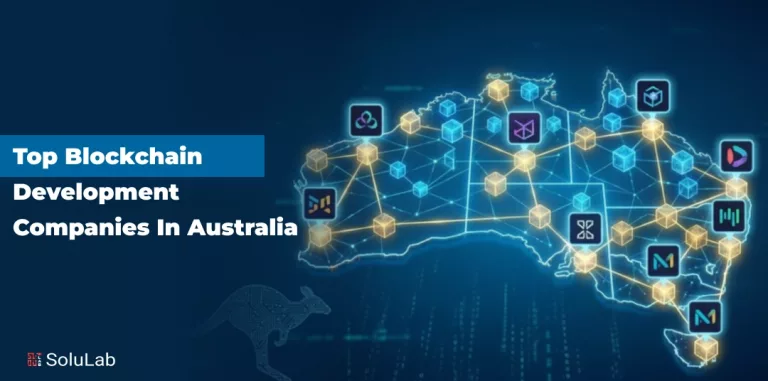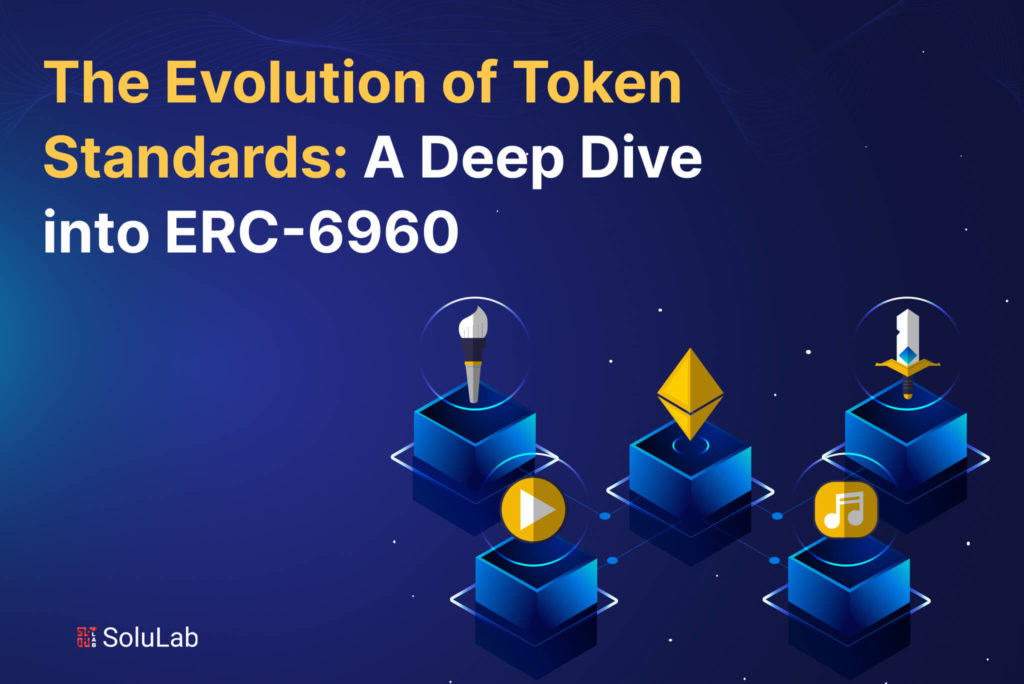
The world of blockchain and cryptocurrency has witnessed a remarkable evolution over the years, with various token standards playing a pivotal role in shaping the landscape. In this deep dive, we will explore the intriguing journey of token standards, with a particular focus on the groundbreaking ERC-6960 standard. From the early days of basic token standards to the sophisticated ERC-6960, we will unravel the complexities, innovations, and implications of this evolutionary process.
The Genesis: Token Standards and Their Importance
Token standards form the backbone of blockchain ecosystems, enabling the creation, transfer, and management of digital assets on a decentralized network. They provide a set of rules and protocols that ensure compatibility, interoperability, and uniformity across diverse platforms and applications. As blockchain technology matured, so did the need for more advanced and specialized token standards.
Rise of Asset Tokenization
The concept of asset tokenization emerged as a groundbreaking use case, extending the capabilities of blockchain beyond native cryptocurrencies like Bitcoin and Ethereum. Asset tokenization involves representing real-world assets (RWAs) as digital tokens on a blockchain, unlocking new possibilities for fractional ownership, liquidity, and global accessibility.
Real-World Assets (RWAs) and Their Tokenization
Real-world assets, ranging from real estate and fine art to stocks and commodities, have traditionally faced liquidity and accessibility challenges. Asset tokenization addresses these issues by converting these tangible assets into digital tokens, making them divisible, transferable, and tradable on blockchain networks. This paradigm shift has attracted significant attention from both traditional and crypto investors.
The Need for Advanced Token Standards: Enter ERC-6960
In the quest for more sophisticated token standards capable of handling the intricacies of asset tokenization, the Ethereum community introduced ERC-6960. This standard goes beyond the basic functionalities of earlier standards like ERC-20 and ERC-721, offering a comprehensive framework tailored for real-world asset representation on the blockchain.
Before delving into the intricacies of ERC-6960, it is essential to grasp the limitations of prevailing token standards. The most widely used standards, ERC-20 and ERC-721, excel in representing fungible (interchangeable) and non-fungible (unique) assets, respectively. However, they falter when it comes to representing fractional ownership of an asset.
To illustrate, if you envisioned investing in a portion of a real estate property or a valuable piece of artwork, you would be required to acquire the entire asset. This substantial financial burden often proves prohibitive for the average individual. This is where ERC-6960 steps into the picture.
Token Standard Evolution: A Historical Perspective
To understand the significance of ERC-6960, it’s essential to trace the evolution of token standards. ERC-20, the first widely adopted standard, revolutionized the fundraising landscape through Initial Coin Offerings (ICOs). ERC-721 introduced the concept of non-fungible tokens (NFTs), allowing unique digital assets like art and collectibles to be tokenized. However, these standards fell short in addressing the complexities associated with real-world assets.
Deep Dive into ERC-6960
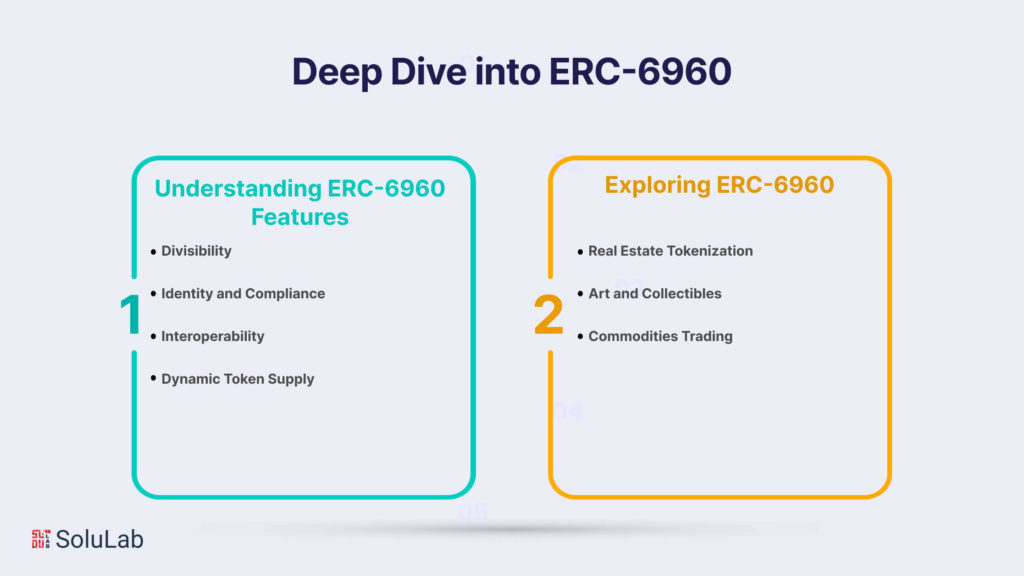
Understanding ERC-6960 Features
ERC-6960 introduces a set of features specifically designed for asset tokenization:
- Divisibility: ERC-6960 tokens are divisible, allowing for the fractional ownership of real-world assets. This feature enhances liquidity and opens up investment opportunities to a broader range of participants.
- Identity and Compliance: The standard incorporates identity and compliance protocols, ensuring that tokenized assets adhere to legal and regulatory requirements. This feature addresses concerns related to fraud, money laundering, and other illicit activities.
- Interoperability: ERC-6960 is designed to seamlessly interact with other token standards, fostering interoperability across diverse blockchain platforms. This interoperability is crucial for the integration of asset tokenization into a broader financial ecosystem.
- Dynamic Token Supply: Unlike fixed-supply tokens, ERC-6960 allows for the dynamic adjustment of token supply based on external factors. This flexibility accommodates changes in asset valuation and market demand.
Exploring ERC-6960:
The versatility of ERC-6960 extends beyond traditional asset tokenization. It finds applications in various industries, including real estate, art, commodities, and more. Let’s explore some key use cases:
- Real Estate Tokenization: ERC-6960 enables the fractional ownership of real estate, making high-value properties accessible to a wider investor base. This democratization of real estate investment has the potential to reshape the property market.
- Art and Collectibles: Tokenizing art and collectibles on the blockchain ensures provenance, authenticity, and easy transferability. ERC-6960’s features make it an ideal choice for representing unique pieces of digital or physical art as tokens.
- Commodities Trading: The dynamic token supply feature of ERC-6960 proves beneficial in commodities trading, where the token supply can adjust based on factors such as market demand, supply chain disruptions, or geopolitical events.
ERC-6960 Specifications
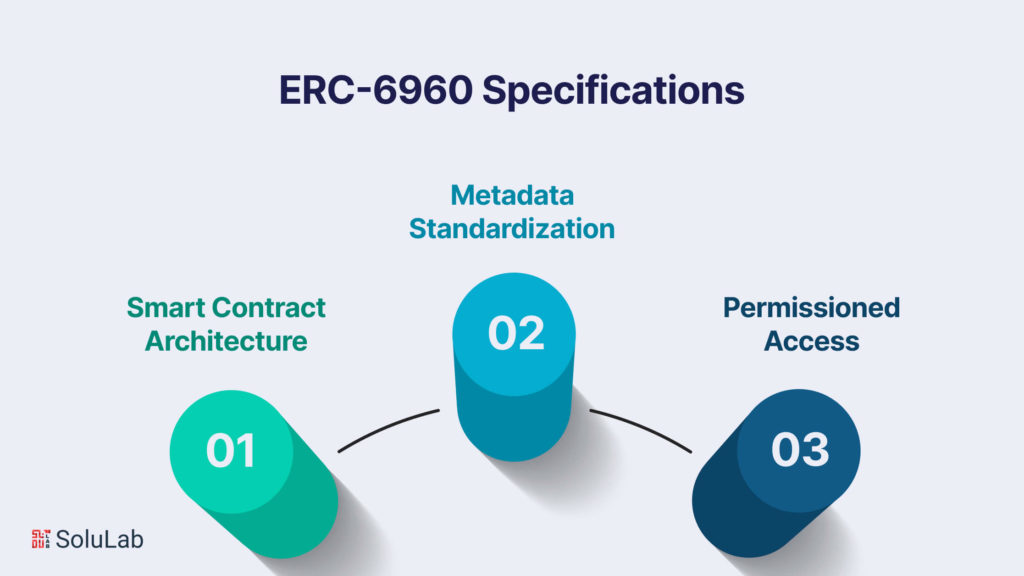
Delving into the technical aspects of ERC-6960, we find a well-defined set of specifications that contribute to its robustness:
Smart Contract Architecture: ERC-6960 employs a smart contract architecture that facilitates the creation, issuance, and management of tokenized assets. The use of smart contracts ensures transparency, security, and automation of asset-related processes.
Metadata Standardization: The standard includes a comprehensive metadata framework for describing tokenized assets. This metadata not only provides essential information about the asset but also aids in compliance and regulatory adherence.
Permissioned Access: ERC-6960 incorporates permissioned access controls, allowing asset issuers to regulate token ownership and transfer based on predefined criteria. This feature provides an additional layer of security and compliance.
ERC-6960 Token Development
Developing ERC-6960-compliant tokens involves adherence to the standard’s specifications and the deployment of smart contracts on the Ethereum blockchain. Developers must consider factors such as asset-specific metadata, compliance requirements, and access controls during the token creation process. The development community has played a crucial role in refining and expanding the capabilities of ERC-6960 through collaborative efforts and continuous improvement.
Token Standards Comparison: ERC-20, ERC-721, and ERC-6960
Understanding the strengths and limitations of different token standards is essential for choosing the most suitable one for a particular use case. Let’s compare ERC-20, ERC-721, and ERC-6960:
ERC-20: Ideal for fungible tokens, ERC-20 is well-suited for applications like cryptocurrencies and utility tokens. However, it lacks the sophistication required for representing unique assets or complying with complex regulatory frameworks.
ERC-721: Non-fungible tokens find their home in ERC-721, making it perfect for unique digital assets. While ERC-721 addresses the uniqueness aspect, it falls short when it comes to divisibility and dynamic token supply, limiting its application in asset tokenization.
ERC-6960: Positioned as the evolution of token standards, ERC-6960 combines the strengths of ERC-20 and ERC-721 while introducing features tailored for asset tokenization. Its divisibility, compliance, and interoperability features make it a versatile choice for a wide range of applications.
Future of Token Standards: A Glimpse Beyond ERC-6960
As technology continues to advance, the evolution of token standards is far from over. The future may witness the emergence of even more specialized standards catering to specific industries or use cases. Interoperability among different blockchain networks and standards could become a focal point, facilitating seamless asset transfer and management across diverse ecosystems.
Asset Tokenization Development: Platforms and Trends
The rise of asset tokenization has given birth to a new breed of platforms dedicated to facilitating the tokenization process. These platforms offer end-to-end solutions, from asset digitization to token issuance and trading. Some notable trends and developments in the asset tokenization space include:
Decentralized Finance (DeFi) Integration: The integration of asset-backed tokens into decentralized finance protocols expands the possibilities for borrowing, lending, and trading traditional assets in a decentralized manner.
Cross-Chain Asset Tokenization: Projects exploring cross-chain compatibility aim to bridge different blockchain networks, allowing tokenized assets to move seamlessly between platforms. This trend enhances liquidity and broadens the reach of tokenized assets.
Governance and DAOs: Asset tokenization platforms are increasingly incorporating governance mechanisms and Decentralized Autonomous Organizations (DAOs) to involve token holders in decision-making processes related to the underlying assets.
Conclusion
The journey from basic token standards to the sophisticated ERC-6960 reflects the dynamic nature of the blockchain and cryptocurrency space. As the demand for asset tokenization grows, standards like ERC-6960 pave the way for a more inclusive and efficient financial ecosystem. The collaboration between the development community, regulatory bodies, and industry stakeholders will play a crucial role in shaping the future of token standards and their impact on the global economy.
The Ethereum ecosystem has expanded its toolkit with the advent of ERC-6960, a revolutionary token standard poised to transform the realm of real-world assets (RWAs). This groundbreaking standard transcends mere tokenization; it serves as an unlocking mechanism, opening doors to a myriad of unprecedented opportunities for investors, developers, and the entire blockchain community.
Whether it’s the fractional ownership of real estate or the seamless transfer of unique digital assets, ERC-6960 stands as a testament to the ongoing evolution of blockchain technology, unlocking new possibilities for innovation and financial inclusion.
As the adoption of ERC-6960 gains momentum, prepare to witness a surge of groundbreaking advancements that will reshape the financial landscape. Stay tuned for this transformative journey!
FAQs
1. What is ERC-6960?
ERC-6960 is a newly proposed token standard on the Ethereum blockchain specifically designed for tokenizing real-world assets (RWAs) such as real estate, commodities, and securities. It addresses the limitations of existing token standards by providing a comprehensive and flexible framework for representing and managing tokenized RWAs.
2. Why is ERC-6960 necessary?
Existing token standards, such as ERC-20 and ERC-721, are not well-suited for representing the complexities of RWAs, which often involve unique attributes, ownership rights, and regulatory requirements. ERC-6960 fills this gap by providing a more sophisticated framework for tokenizing RWAs, enabling fractional ownership, enhanced liquidity, and global accessibility.
3. What are the key features of ERC-6960, and how do they address the challenges associated with traditional asset representation on the blockchain?
ERC-6960 features include divisibility, identity and compliance protocols, interoperability, and dynamic token supply. These features collectively address challenges such as fractional ownership, regulatory compliance, seamless interaction with other standards, and the ability to adjust token supply dynamically based on external factors, making it suitable for real-world asset tokenization.
4. How does ERC-6960 ensure compliance with legal and regulatory requirements in the representation of real-world assets?
ERC-6960 incorporates identity and compliance protocols, ensuring that tokenized assets adhere to legal and regulatory requirements. This includes features such as permissioned access controls, metadata standardization, and smart contract architecture, providing transparency and security while facilitating regulatory compliance.
5. Can ERC-6960 tokens interact with other token standards and blockchain platforms?
Yes, ERC-6960 is designed to foster interoperability by allowing seamless interaction with other token standards. This capability enables ERC-6960 tokens to move across diverse blockchain platforms, contributing to a more interconnected and efficient financial ecosystem.
6. What are some practical use cases of ERC-6960 in the tokenization space?
ERC-6960 finds applications in various industries, including real estate, art, and commodities. Examples include fractional ownership of real estate, representing unique art pieces as tokens, and dynamic token supply adjustments for commodities trading.
7. How can developers create ERC-6960-compliant tokens, and what are the key considerations in the development process?
Creating ERC-6960-compliant tokens involves adhering to the standard’s specifications and deploying smart contracts on the Ethereum blockchain. Developers must consider factors such as asset-specific metadata, compliance requirements, and permissioned access controls during the token creation process.
8. What trends and developments are shaping the future of token standards beyond ERC-6960?
The future of token standards may witness the emergence of even more specialized standards catering to specific industries or use cases. Trends include increased interoperability among different blockchain networks, the integration of asset-backed tokens into decentralized finance (DeFi), and the incorporation of governance mechanisms and DAOs in asset tokenization platforms.




